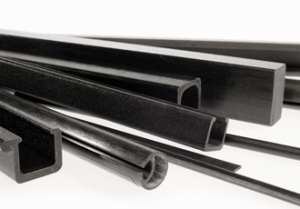Cities of the future could be made out of synthetic bone

Cambridge researchers think that the cities of the future need to go back to nature if they are to support an ever-expanding population, while keeping carbon emissions under control. Between them, concrete and steel are responsible for as much as a tenth of worldwide carbon emissions. Before they ever reach a construction site, both steel and concrete must be processed at very high temperatures – which takes a lot of energy. And yet, our cities are completely dependent on these two unsustainable materials.
"I fly back and forth a lot between the UK and the US, and I'd been harbouring a lot of guilt about the effect that had on my carbon footprint – I'd always assumed, as many of us do, that air travel is a huge contributor to carbon emissions," says bioengineer Dr Michelle Oyen of Cambridge's Department of Engineering.
"But the truth is, while the emissions caused by air travel are significant, far more are caused by the production of concrete and steel, which of course is what most cities are built from."
Whereas some researchers are investigating ways of producing steel and concrete in more energy-efficient ways, or finding ways of using less, Oyen would rather turn the tables completely, and create new building materials that are strong, sustainable and take their inspiration from nature.
Oyen works in the field of biomimetics. In her lab, with funding support from the US Army Corps of Engineers, she constructs small samples of artificial bone and eggshell, which could be used as medical implants, or even be scaled up and used as low-carbon building materials.
Like the real things, artificial bone and eggshell are composites of proteins and minerals. In bone, the proportions of protein and mineral are roughly equal – the mineral gives bone stiffness and hardness, while the protein gives it toughness or resistance to fracture.
While bones can break, it is relatively rare, and they have the benefit of being self-healing – another feature that engineers are trying to bring to biomimetic materials.
In eggshell, the ratios are different: about 95% mineral to 5% protein, but even this small amount of protein makes eggshell remarkably tough considering how thin it is.
When making the artificial bone and eggshell, the mineral components are 'templated' directly onto collagen, which is the most abundant protein in the animal world.
"One of the interesting things is that the minerals that make up bone deposit along the collagen, and eggshell deposits outwards from the collagen, perpendicular to it," says Oyen. "So it might even be the case that these two composites could be combined to make a lattice-type structure, which would be even stronger – there's some interesting science there that we'd like to look into."
In her lab, Oyen and her team have been making samples of artificial eggshell and bone via a process that could be easily scaled up – and since the process takes place at room temperature, the samples take very little energy to produce. But it may be some time before we're living in bone and eggshell houses.
For one, the collagen that Oyen needs to make these materials comes from natural (meaning animal) sources. One of the things she's currently investigating is whether a non-animal-derived or even synthetic protein or polymer could be used instead of natural collagen.
"Another issue is the construction industry is a very conservative one," Oyen says. "All of our existing building standards have been designed with concrete and steel in mind. Constructing buildings out of entirely new materials would mean completely rethinking the whole industry. But if you want to do something really transformative to bring down carbon emissions, then I think that's what we have to do. If we're going to make a real change, a major rethink is what has to happen."
Dr Michael Ramage from the Department of Architecture is another Cambridge researcher who believes we need to expand our use of natural materials in buildings. Ramage has several ongoing research projects that are looking into the use of wood – one of the oldest building materials we have – for tall buildings.
Working with PLP Architecture and engineers Smith and Wallwork, Ramage recently delivered plans for an 80-storey, 300 m high, timber skyscraper to the Mayor of London. The proposals currently being developed would create more than 1,000 residential units in a 1 million square-foot, mixed-use tower and mid-rise terraces, integrated into the Barbican in central London.
Like other natural materials, the primary benefit of using wood as a building material is that it is a renewable resource, unlike concrete and steel.
Ramage's research is also investigating other potential benefits of using wood for tall buildings, such as reduced costs and improved construction timescales, increased fire resistance and a significant reduction in the overall weight of buildings.
"If London is going to survive an increasing population, it needs to densify," says Ramage. "One way is taller buildings. We believe people have a greater affinity for taller buildings in natural materials rather than steel and concrete towers".
"The fundamental premise is that timber and other natural materials are vastly underused and we don't give them nearly enough credit. Nearly every historic building, from King's College Chapel to Westminster Hall, has made extensive use of timber."
The tallest timber building in the world at the moment is a 14-storey apartment block in Bergen, Norway, but Ramage foresees future cities where timber skyscrapers sit alongside those made of concrete and steel.
Similar articles
More from University of Cambridge
- Cities of the future could be made out of synthetic bone 24th June 2016
- Timber skyscraper to be integrated within the Barbican 8th April 2016
- First Coding School for Girls was a success 24th August 2015
- Aeronautic superalloys on show at Summer Science Exhibition 1st July 2015












Write a comment
No comments